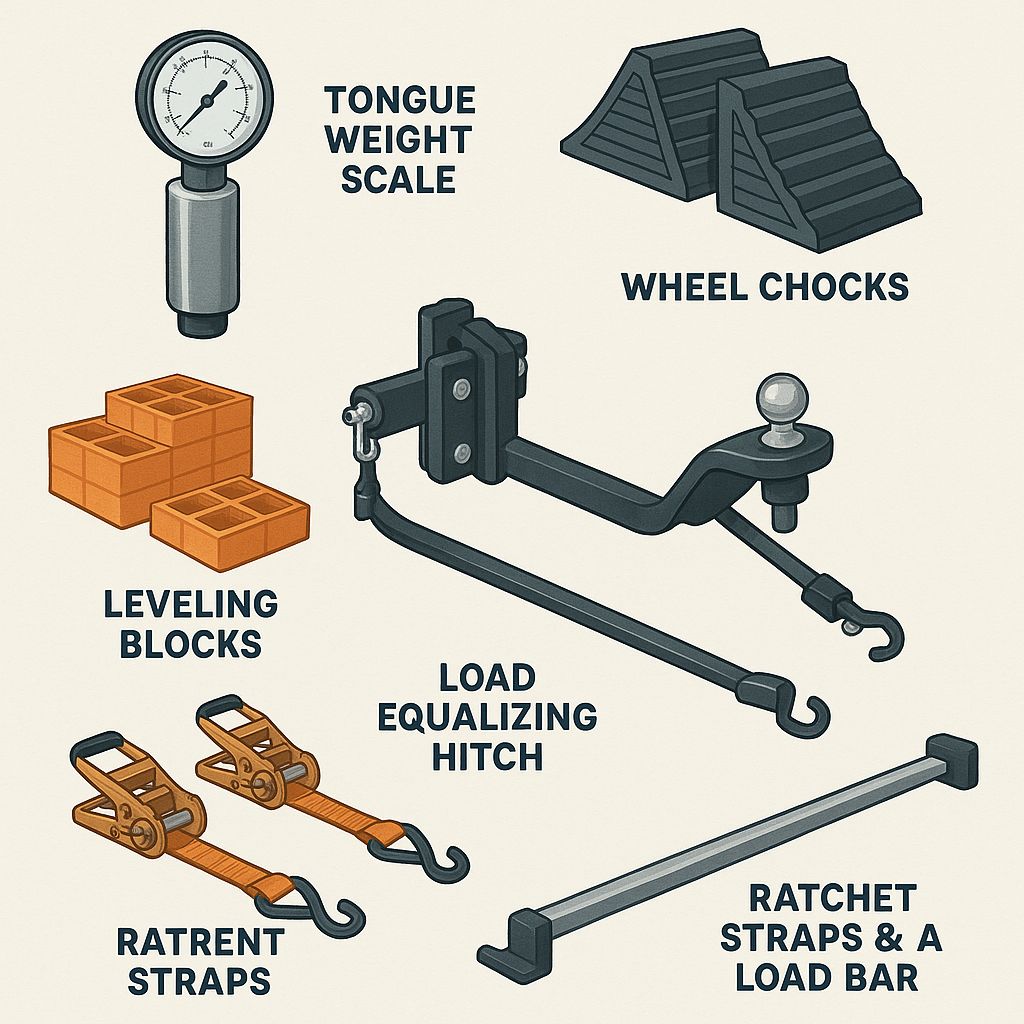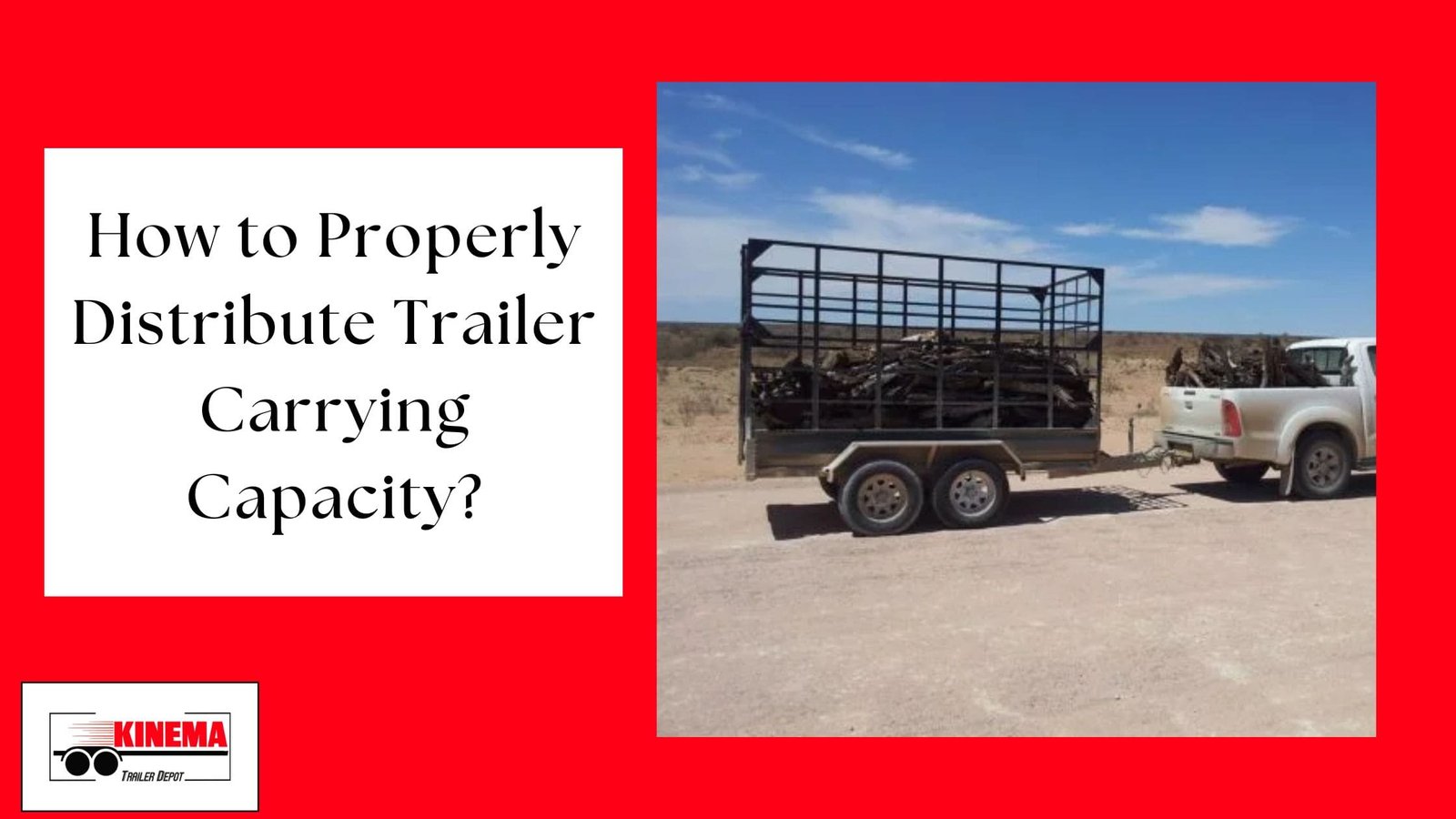Imagine this: You’ve got your trailer hooked up, your cargo strapped in, and the open road ahead. But the moment you hit 55 mph, your trailer starts swaying like a kite in the wind. That’s not just bad luck—it’s a classic sign of improper load distribution.
Understanding the carrying capacity of trailers isn’t just about knowing how much weight your trailer can handle. It’s about knowing how to place that weight. Even if you’re within your limit, loading it the wrong way can lead to serious safety hazards—like jackknifing, axle blowouts, or loss of control.
Whether you’re a weekend DIYer towing a utility trailer or a contractor moving heavy equipment, distributing cargo correctly could save your vehicle—and your life.
Understanding the Carrying Capacity of Trailers
So, what exactly is the carrying capacity of trailers?
In simple terms, it’s the maximum weight your trailer can safely haul after subtracting the trailer’s weight (known as the curb weight). The formula looks like this:
Carrying Capacity of Trailers = GVWR – Trailer Weight
GVWR stands for Gross Vehicle Weight Rating—a number assigned by the manufacturer that you should never exceed. Exceeding this weight doesn’t just damage your trailer; it can also void your warranty or even result in fines if you’re stopped by highway patrol.
To avoid confusion:
- Dry Weight: The weight of the trailer itself without any cargo or fluids.
- Payload: The actual weight of the cargo you’re hauling.
- Tongue Weight: The amount of force the trailer tongue exerts on your vehicle’s hitch.
How to Find Your Trailer’s Gross Vehicle Weight Rating (GVWR)?
Before you start packing your trailer with tools, gravel, lumber—or even your ATV—you need to know the GVWR.
The Gross Vehicle Weight Rating is the key number that tells you how much total weight (including the trailer itself) your setup can handle safely. You can usually find this rating:
- On a manufacturer label or sticker—often near the coupler or inside a front panel door.
- In the trailer’s owner’s manual.
- On the trailer’s certificate of origin or title.
If you’re shopping for a new trailer, always ask the dealer to walk you through the GVWR vs. actual trailer weight. You’d be surprised how much of your “rated” carrying capacity is already taken up by the trailer’s steel frame, tires, and ramps.
Axle Weight Distribution: What It Is and Why It’s Crucial
Even if you’re within your trailer’s carrying capacity, placing too much weight on one axle—or the wrong spot—can cause axle failure, tire blowouts, or erratic braking.
That’s where axle weight distribution comes in.
Each axle on your trailer is designed to carry a set amount of weight, typically split equally. But if you load your trailer too far forward or too far back, the weight can shift disproportionately. Too much on the rear? You risk sway. Too much on the front? You can overload your hitch and front axle, damaging your tow vehicle.
The safest strategy is the “60/40 Rule” (covered in detail in Point 6): Place 60% of the cargo weight toward the front half of the trailer, and 40% toward the back.
According to the U.S. DOT and NHTSA, uneven trailer loading accounts for a significant number of towing-related incidents every year.
Always check your axle ratings and confirm you’re not placing all the weight over a single axle, especially with tandem axle trailers that are designed to share the load evenly.
Front, Middle, or Rear? Where to Place the Load Safely
One of the most common trailer mistakes isn’t just what you carry—it’s where you place it.
Think of your trailer like a see-saw. Too much weight in the back causes the front to lift, which leads to dangerous trailer sway. Load it all in the front? You’ll overload the tongue and put too much stress on your tow vehicle’s rear axle.
The key to properly using the carrying capacity of trailers is even weight distribution. But here’s the golden placement rule:
- 60% of the load should be placed in the front half of the trailer.
- The remaining 40% should sit in the back half.
This balance creates optimal tongue weight and prevents instability. U-Haul’s towing safety experts agree—placing heavy cargo closer to the front axle significantly reduces the risk of sway and improves control. (U-Haul Trailer Loading Guide)
Load Tip: Position heavier items low and centered. This keeps your trailer’s center of gravity balanced, especially when braking or cornering.
The 60/40 Rule: The Golden Ratio of Trailer Loading
If you remember only one thing from this guide, let it be the 60/40 rule. This rule is a foundational part of any good cargo trailer guide or safety checklist.
Here’s what it means:
- 60% of your cargo’s weight should be in the front half of the trailer.
- 40% should go toward the rear.
- This applies lengthwise, not side-to-side. Side weight should also be even.
Why does this matter? Because this ratio provides just the right amount of tongue weight—typically about 10–15% of the total load. That amount helps the trailer “follow” your tow vehicle rather than resisting or swaying behind it.
Too little tongue weight can cause the trailer to fishtail. Too much, and you’ll sag the tow vehicle, wear tires unevenly, and stress the suspension.
Real-Life Examples: Balanced vs. Unbalanced Loads
Let’s break theory into practice. Here are two quick scenarios that show how smart weight placement impacts your trailer’s performance:
1. Example A – Balanced Load:
- John loads 60% of his gravel in the front half of a utility trailer, keeping bags centered and low.
- The remaining 40% is spread evenly in the back.
- His trailer tracks straight at 65 mph, brakes smoothly, and doesn’t sway.
2. Example B – Unbalanced Load:
- Sarah stacks heavy mulch bags behind the axle to leave space up front for tools.
- This creates a rear-heavy load.
- At 50 mph, the trailer starts swaying. She brakes suddenly—and nearly loses control.
This is why the carrying capacity of trailers means more than a number. It’s about safe weight use, not just maximum hauling power.
Safety First: Risks of Overloading or Uneven Distribution
It may be tempting to stack “just one more pallet,” but the risks of overloading or uneven cargo placement are very real—and often very expensive.
Here’s what can go wrong:
- Axle Damage: Surpassing axle capacity can cause warping or full failure.
- Tire Blowouts: Uneven weight causes excessive wear on certain tires.
- Sway Accidents: Imbalanced loads lead to instability at highway speeds.
- Legal Trouble: Exceeding weight ratings can lead to DOT fines or citations.
These risks highlight why having a well-informed dump trailer checklist or cargo trailer guide is vital—whether you’re hauling mulch, gravel, furniture, or equipment.
Always refer to your trailer’s specs and follow the carrying capacity of trailers religiously. And if you’re unsure—weigh it. Many truck stops and trailer yards offer public access scales for a small fee.
Tire Pressure and Suspension: The Unsung Heroes of Load Safety
When people talk about trailer safety, they often overlook the obvious: tires and suspension systems. Yet, both play a vital role in supporting the carrying capacity of trailers.
Let’s break it down:
- Tire Pressure: If your tires are underinflated, they can’t hold the weight they’re rated for. That increases the chance of a blowout. Overinflation? That reduces traction and creates uneven wear.
- Suspension: A good suspension system—especially leaf spring or torsion axle systems—helps absorb the shock from bumpy roads and heavy loads. If your suspension is worn, even a properly loaded trailer can become unstable.
Make it a habit to:
- Check tire pressure before every haul.
- Know your tire’s load rating (printed on the sidewall).
- Inspect suspension parts for rust, sagging, or cracking.
How to Calculate Tongue Weight (and Why It Matters)?
Tongue weight is the downward force your trailer exerts on your tow vehicle’s hitch. While it sounds technical, it’s simple—and essential.
Here’s why it matters: Too little tongue weight (less than 10% of total load) = sway. Too much (more than 15%) = sagging rear end, poor steering, and overworked brakes.
The sweet spot is 10–15% of your trailer’s loaded weight.
How to Measure It?
- Use a tongue weight scale (available online or at trailer supply stores).
- Or visit a truck scale, load the trailer, and weigh your setup:
- Weigh the full rig (truck + trailer).
- Unhook the trailer and weigh the truck alone.
- Subtract to find the tongue weight.
Essential Tools to Help Distribute Load Correctly
Want to master the art of load balance? The right tools can turn guesswork into precision.

Must-Have Tools for Load Distribution:
- Tongue weight scale – Accurate tongue force readings.
- Wheel chocks – Keep the trailer steady while loading.
- Leveling blocks – Prevent sideways tilt while parking.
- Load equalizing hitch – Helps distribute weight evenly across axles and improves ride quality.
- Ratchet straps & load bars – Keep items locked in place and stop shifting mid-trip.
Bonus gear includes:
- Digital tire pressure gauge for accurate inflation
- Suspension monitoring apps (yes, they exist!)
- Axle weight sensors for larger fleets or pros
These tools aren’t just handy—they’re your first defense against overloading and mishandling your trailer’s carrying capacity.
Final Tips: Building a Safe, Smart Hauling Habit
By now, you’ve learned that distributing trailer weight isn’t just about numbers—it’s about precision, planning, and consistency. Before you hit the road, run through this smart-hauling checklist:
Quick Pre-Trip Load Safety Checklist:
- Checked trailer’s GVWR and personal load?
- Applied the 60/40 rule?
- Balanced weight side-to-side?
- Verified tongue weight (10–15%)?
- Tires inflated to rated PSI?
- Used chocks, straps, and leveling tools?
Mastering the carrying capacity of trailers becomes a habit with practice. The more trips you make, the better you’ll know how your trailer handles—and how to tweak weight placement for optimal performance.
At Kinema Trailer Depot LLC, we’re here to help you haul smarter every mile.
Need expert advice or a trailer that fits your exact needs? Contact us today!









Leave a Reply